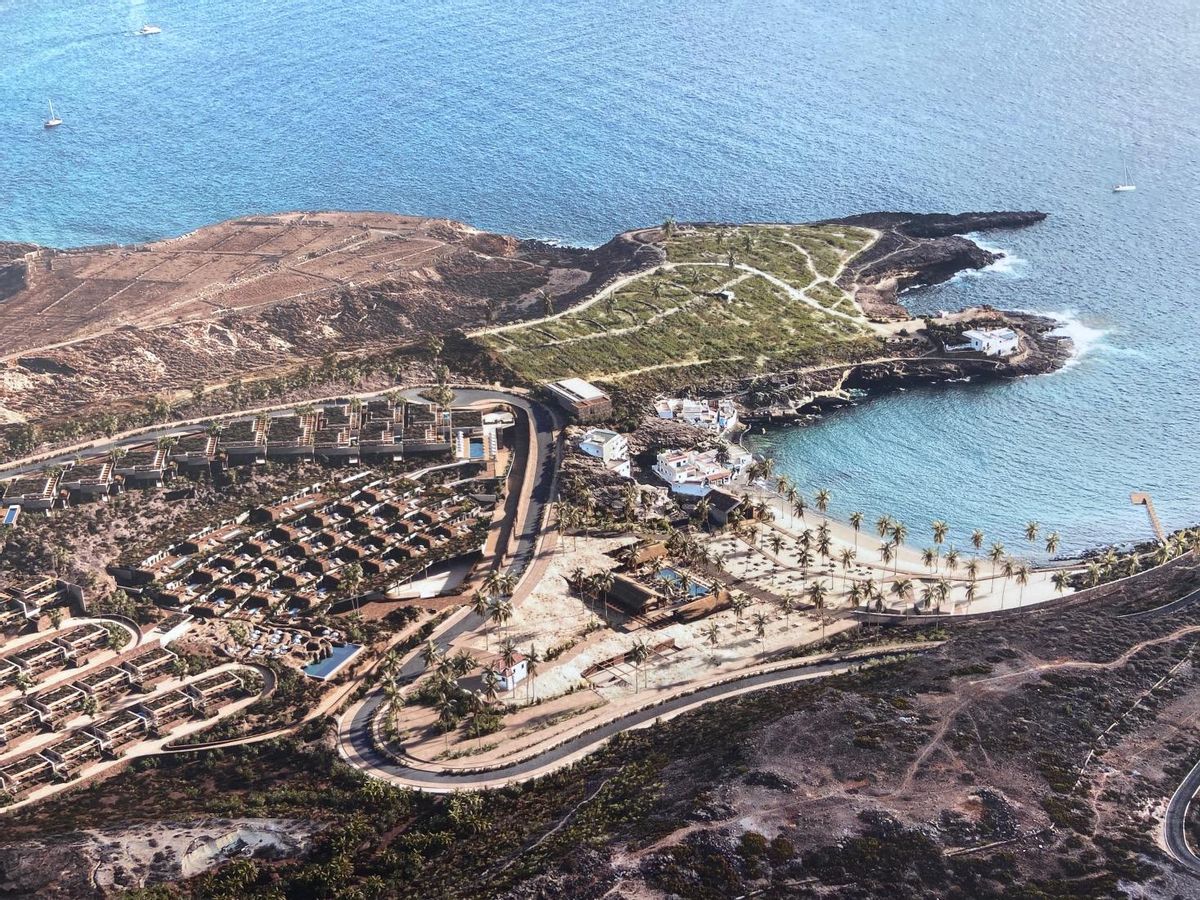The construction at Cuna del Alma has not compromised the archaeological site and remains in excellent condition, as verified by Arqueocanaria, the firm responsible for the survey conducted in 2018 and the excavation undertaken in 2019. In addition to these investigations, archaeologists have been overseeing the construction activities since June 2022. Until a thorough archaeological assessment is completed, all elements of clear heritage significance, as well as those that evidently are not, have been meticulously documented, photographed, outlined, and safeguarded to ensure they remain unaffected by the works.
The developer of the tourist venture articulated that Valentín Barroso, the technical director of the on-site team, contests the notion of “destruction of archaeological sites” – the organisation describes such a claim as “falsehood” – and clarifies that “only one site within this expanse has been impacted, but not destroyed.” He further added that the site housing the remnants of cabins and most of the archaeological findings remains completely preserved.
The Cuna del Alma initiative encompasses the demarcation, safeguarding and exhibition of the entire area alongside the nearby engravings for public enjoyment. The levels of protection allocated to the site and its archaeological potential will facilitate excavations for years to come, conducted by a scientific team from the University of La Laguna, as reported by Segunda Casa Adeje, SL.
The PA4 deposit, situated in the upper section of the urban development occurring in The Puertito de Adeje, “is the most significant and best-preserved in this vicinity and, from the findings, we can infer the pastoral activities conducted by the aboriginal people here until the conquest of the island. From the outset, this site was intended to be preserved or excavated archaeologically in its entirety, as evidenced in the Archaeological Reports from Arqueocanaria,” the developer explained.
The engravings identified and examined within the Cuna del Alma area “are not Guanche, but it should not be inferred that they lack heritage significance.” According to the report from the archaeological firm, they will not only be protected but will also be subject to musealization for public appreciation and understanding along the designated pedestrian pathways.

Infographic of the Cuna del Alma tourism project, in Adeje / The Day
According to Valentín Barroso, “the engraving that prompted the Government of the Canary Islands to halt work and then subsequently resume it measures 5×5 centimetres, is not Guanche, and is situated within the centre of an area comparable to seven football fields that has consistently been a protected zone, due to its designation in the Partial Plan for Area of Special Landscape Value; “This Spanish-Canary engraving was never jeopardised by the construction work.” The project specifies that the area will feature pedestrian pathways for public access and, when appropriately safeguarded, preserved, and clearly marked, these will be accessible for everyone to enjoy, with the engravings effectively musealized.
Within catalogued green spaces
The engravings located on the premises “have not incurred and will not incur any damage, as most are positioned amongst green spaces of special landscape significance. The remaining engravings will be preserved with particular modifications to the pathways or through systematic collection of those that have become dislodged from their original position for musealization. The vast majority of rocks showing engraving marks, “usually found amid cultivated terraces,” are “imprints created by the metal tip of the plough during the land preparation process for agriculture in contemporary times; nonetheless, these stones will be arranged within the museum area for visitors to view.”
Valentín Barroso affirmed that “as mandated, the archaeological activities sanctioned by the Government of the Canary Islands are proceeding as usual.” The urban development possesses all requisite legal permits, and adherence to regulations has been verified by the relevant authorities, stated the developer.
On the 11th, the Save La Tejita Association announced that the Environmental Prosecutor’s Office has begun processing the complaint it submitted concerning the “new irreversible harm to the archaeological heritage” caused by the resumption of works related to the Cuna del Alma tourist complex.
















